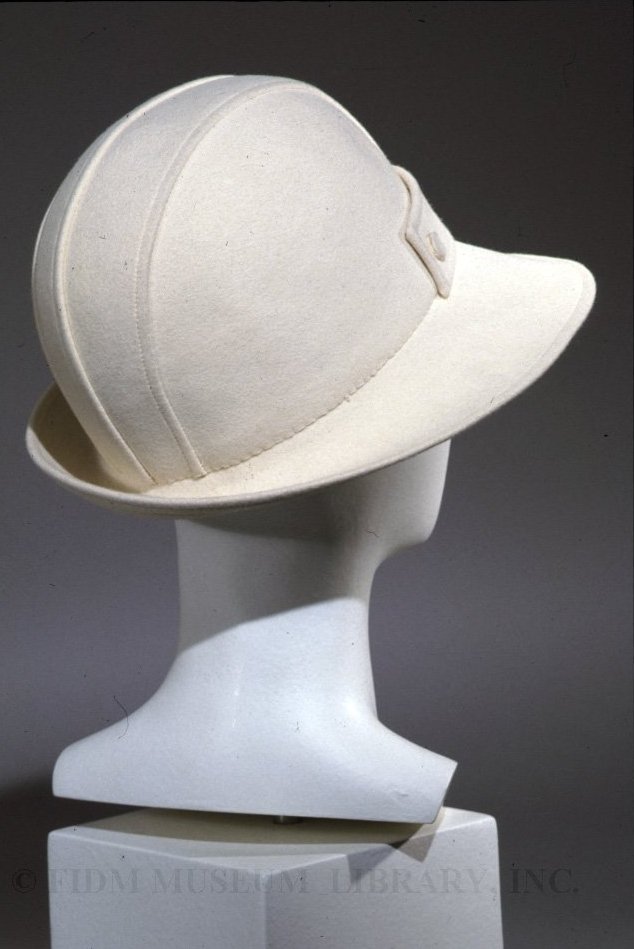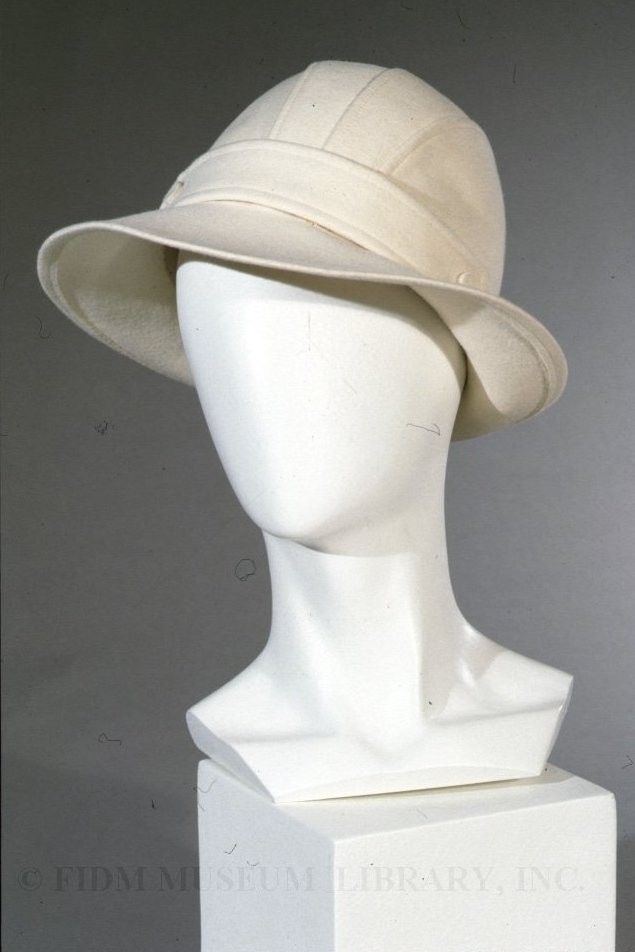Fall is officially here! After the autumnal equinox on September 22, the days get shorter and the nights get longer. Even in Los Angeles, there is sometimes a chilly bite in the air. Naturally, we've got to start dressing for the weather–coats, sweaters, scarves and hats are on the agenda. In honor of the changing season, today's post features an early 1970s felt hat by Adolfo.
 Adolfo
Adolfo
c. 1973
Gift of Anonymous Donor
99.40.1
Though Adolfo (b. 1933) once claimed that he “never enjoyed making hats,” they were his entrée into the fashion industry.1 Born in Cuba, Adolfo Sardinia immigrated to New York in 1948. Almost immediately after his arrival in New York, Adolfo began work as an apprentice milliner at Bergdorf-Goodman. For the next decade, Adolfo toggled between Paris, where he apprenticed for both Balenciaga and Chanel, and New York, where he worked as a hat designer for Emme Inc. In 1962, Adolfo opened a New York millinery salon where he designed made-to-order hats for individual clients and ready-to-wear hats for retail distribution. He soon expanded his business into custom clothing, designing for socialites C.Z. Guest, Nancy Reagan, Betsy Bloomingdale, the Duchess of Windsor and others.
When Adolfo began his career in the 1950s, most women wore hats daily. They were an important element of the “correct” wardrobe, and were worn for all but the most informal occasions. During the 1960s, hats were worn less frequently, but became more playful. Adolfo’s 1960s millinery designs, including a "pigtail" hat (close-fitting hat with attached braid), gold-coin trimmed headscarves, jeweled helmets and printed paper caps, reflected fashion’s playful new spirit. In the early 1970s, hats enjoyed a brief renaissance. In July 1972, Vogue stated unequivocally, “there will be a hat on your head,” either a softly structured wool hat similar to a fedora, or a glamorous turban.2 These hat styles were borrowed from the 1930s and 1940s, a reflection of fashion's new found interest in nostalgia.
Adolfo's hat, somewhere between a pith helmet and a fedora, leans toward the masculine wardrobe. The rounded crown and seaming suggest a pith helmet, while the jauntily upturned brim hints at a fedora. Both types of hats are typically associated with masculine dress. During the early 1970s, women often borrowed from the male wardrobe, as demonstrated by a wool pantsuit in our Study Collection. Textured layers were also popular, as seen in this early 1970s Sonia Rykiel tunic ensemble. Either look would be perfectly finished by a hat.
1 Schiro, Anne-Marie. “Adolfo Decides To Quit Designing” The New York Times. 19 Mar. 1993.
2 "Fall Guidelines: The New Ease in Fashion" Vogue. 1 July 1972: 40


